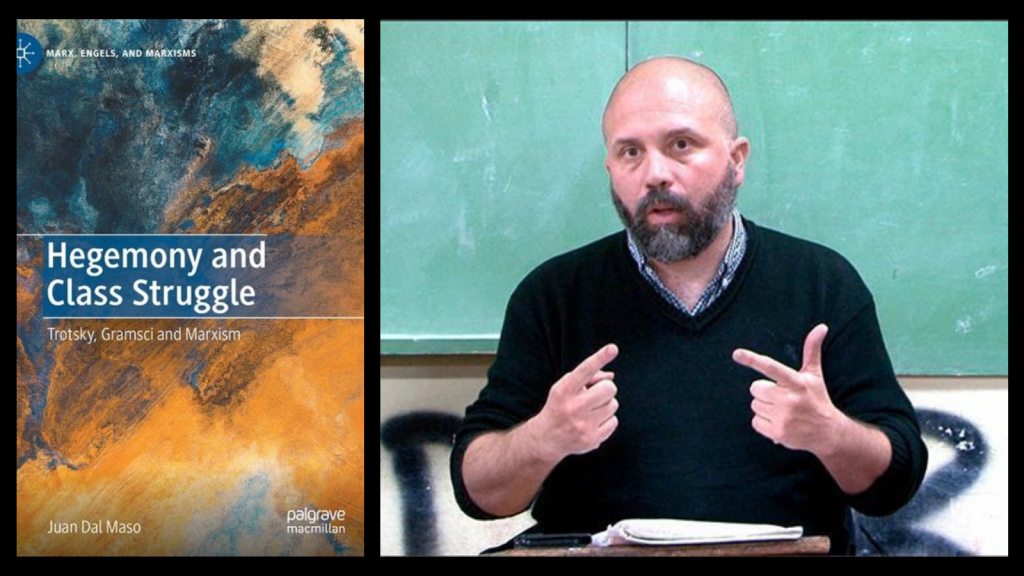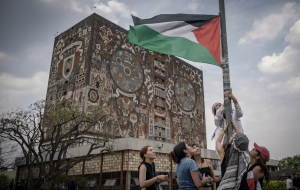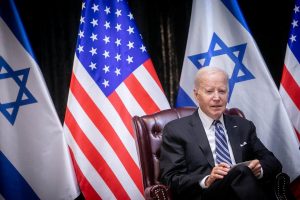Originally published in Hegemony and Class Struggle.
At the end of 1976, Perry Anderson published his magisterial study, “The Antinomies of Antonio Gramsci,” in issue 100 of the New Left Review, to mark the journal’s fortieth year in print. The book-length essay was clearly conceived as a critique of the reformism of the emerging Eurocommunist current, for which Gramsci, or rather the Gramsci constructed retroactively by its French and Italian adherents, served as a reference point, providing both a theoretical foundation and a guarantee of its lineal descent from the founding congresses of the Third International. The influence of Anderson’s analysis can hardly be overestimated: it would come to determine how Gramsci was read, at least in the English-speaking world. Reading “Antinomies,” written just after the peak of the revolutionary wave of 1968-1975, today, it is difficult to avoid the conclusion that the essay’s most striking antinomies or paradoxes are not those Anderson claimed to have discovered in Gramsci, but his own. The “slippages” he identified in Gramsci could be understood as such only in relation to Anderson’s renewed appreciation for both the juridical distinction between state and civil society and the notion of the (European) parliamentary regime as an expression of popular sovereignty/ His reading helped create a broad interest in Gramsci in the UK and the US, even as it produced a grid of interpretation that limited the practical and theoretical effects of The Prison Notebooks.
It should come as no surprise that one of the most comprehensive attempts to free Gramsci’s work from this grid does not come from Europe or North America, but from the Southern Cone of Latin America. It might be argued that the most difficult challenges, indeed, the greatest threats and dangers, Gramsci faced in both his political and personal life, and which are inscribed at different registers in The Prison Notebooks, appeared or reappeared 50 years later in Chile or, as in the case of Juan Dal Maso, Argentina. The dictatorship installed in 1976 (preceded by several years by a reign of terror against the Left carried out by “non-state actors”) could not be characterized as fascist, but the questions of strategy (the war of position versus the war of maneuver, the united front or the proletarian frontal assault) were posed as urgently and with as much at stake as would have been the case against a fascist enemy. This is the legacy bequeathed by an earlier generation to the revolutionary left in Argentina today, a fund of political experiences and experiments, the living memory of which allows them to be examined closely for whatever knowledge might be gleaned from them.
This history, nowhere made explicit, although it glimmers intermittently at certain key points in the text, informs every page of this book. The experience of struggle both lived and remembered has allowed Dal Maso to arrange a theoretical and political encounter between Trotsky and Gramsci that is not only welcome but necessary. It is welcome especially insofar as it is a comparison of Trotsky and Gramsci that is more than a casual notation of apparent points of convergence, difference and opposition (and I am speaking primarily of The Prison Notebooks, rather than of Gramsci’s writing prior to his arrest at the end of 1926, and of Trotsky’s work from the same period—with the exception of the early text, Results and Prospects). To put them in dialogue requires the work of translation at every level, as well as a careful examination of the differences that are “obvious to everyone” (e.g., Gramsci’s critique of permanent revolution) to determine the extent to which these differences are real and can be sustained by the texts themselves, simply to render them theoretically commensurable. This encounter is also necessary if we are to read both Trotsky and Gramsci in a new way that allows us to see what was previously invisible and illegible in their texts, even, or especially, those most frequently read. The objective alliance between them that emerges from Dal Maso’s study may be understood as part of a united front in the realm of theory that is coextensive with the effort to build a united front in practice to confront the contemporary re-emergence of fascism (and neo-fascism) internationally.
What makes arranging an encounter or a dialogue between Trotsky and Gramsci so difficult? To begin, nearly everything Trotsky wrote after his expulsion from the CPSU in 1927 represents “the concrete analysis of the concrete situation” that he, just as much as Lenin, regarded as “the soul of Marxism.” The fact that these texts often produce theoretical effects (or side-effects), noticed or unnoticed by those who read them, does not change the fact that Trotsky seldom explicitly returns to the theoretical foundations of Marxism by constructing the sometimes elaborate genealogies we find in Gramsci: no long excurses on Hegel (or his heirs), no mention of Machiavelli, etc. The fortunes of the term “hegemony,” that is, the ways it has been worked on, invoked, or exploited, however we evaluate them, show that Gramsci’s aim was to supply a concept, or perhaps a term that would indicate the absence of a concept, necessary to the continuing development of Marxism. Trotsky’s objective in every case was to provide as detailed an account as possible of a given conflict: the forces involved, their relative strength, their weapons, as well as the terrain on which combat took place, the limits it imposed and the possibilities it opened up. Even if, as Alex Callinicos intuited some forty years ago, and the contents of Althusser’s library confirm, Trotsky’s History of the Russian Revolution presented a version of the notion of the overdetermined contradiction and showed the consequences of this notion for political practice, it did so without registering the existence of this notion. While the difficulties of Trotsky’s exile are not comparable to those of Gramsci’s incarceration, physically or materially, both were experiences of punishment by banishment or exclusion. Trotsky reacted to being removed from the center of political deliberation and decision by increasing the number and magnitude of his political analyses: from China, Germany, Spain, France, the US and Mexico (not to mention his unceasing effort to explain the counter-revolution in the USSR), establishing contacts with sympathetic intellectuals and militants around the world and dispensing advice on tactics and strategy. Gramsci, in contrast, faced with far more difficult circumstances, above all, having to avoid provoking the ire of his fascist jailers or of the dominant (Stalinist) tendency in the Communist movement, and with far less access to information and resources, sought to examine the theoretical and philosophical foundations and assumptions of many of the same tendencies whose practice was the object of Trotsky’s critique.
Perhaps the most directly theoretical of Trotsky’s work is that part which is least read. I am not referring to the thin collection of his philosophical notebooks, his work on literature and art or even his nearly forgotten collection, The Problems of Everyday Life (cultural revolution according to Trotsky), but to his military writings and in particular those pieces devoted to the debates in the young Soviet Republic around the question of a unified military doctrine in 1921-22. It is in his response to a group of commanders in the Red Army who have proposed a military doctrine based on the monist world view and the military science it makes possible, that Trotsky comes very close indeed to Gramsci (as read by Dal Maso against Anderson) and perhaps even more to Machiavelli (in The Prince as well as in The Art of War). Trotsky’s approach to strategy and tactics in political practice is the same as his approach to the strategy and tactics involved in war. In fact, the two are inseparable, and while politics must remain in command in the last instance, war communicates the truth that political practice often conceals from itself. The “theory of the offensive ” supported by the German KAPD and the Bordighist current in Italian Communism involved both military and political strategy. In its earliest form, tentatively endorsed by Lenin and Trotsky, it took its inspiration from the extension of the French revolution under Napoleon through military action to liberate the peoples of Europe from feudal subjection. When the Red army repelled a Polish invasion early in 1920, and then proceeded to invade Poland. Trotsky noted that “the Red Army was then advancing on Warsaw and it was possible to calculate that because of the revolutionary situation in Germany, Italy, and other countries, the military impulse – without, of course, any independent significance of its own but as an auxiliary force . . . – might bring on the landslide of revolution then temporarily at a dead point.”1Trotsky, Leon. The First Five Years of the Communist International, 2 volumes, New York: Pathfinder Press, 1972, II: p. 9.While the defeat of the Red Army outside of Warsaw convinced Lenin and Trotsky that the military version of the Offensive was an error (above all because it was not regarded by Polish workers as a means of liberation), a political version flourished throughout the Communist parties. It was often described as a kind of intoxication: there was no other way than forward, by taking the offensive without regard to the concrete relationship of forces, with the certainty that decisive action would rouse the now passive majority of the proletariat. The 1921 March Action in Germany demonstrated the folly of replacing strategic action with a moral-political imperative based on faith in the certainty of Revolution.
This folly, grounded in the defeat of the revolutionary wave that followed in the wake of World War I, was as pervasive in the Soviet Republic as elsewhere, nourished by the acute awareness of the importance of the extension of the revolution in Europe for the mere survival of the revolution in Soviet Russia. In 1919-1920 a group of Red Army commanders proposed the adoption of a “Unified Military Doctrine” at the center of which was a theory of the offensive and the principle of the maneuverability of the Red Army, the success of which in practice was guaranteed by Marxist science. More importantly, this doctrine was derived only in part from the objective conditions in which the war was fought; its essential foundation was the proletarian class character of the Red Army. To take the offensive from the start, to be the first to attack is always advantageous (a principle, as Trotsky pointed out, taken from the French military statutes of 1921). The doctrine allowed for the possibility of “positionalist” methods, but repeated that such methods could never be allowed to become “the basic form of struggle” and warned against becoming “carried away” with merely defensive methods.2Leon Trotsky. Military Writings. New York: Pathfinder, 1971, p. 86.
While Trotsky’s critique of this doctrine was based to a certain extent on examples from the recently concluded civil war, and the near impossibility of launching a full scale offensive given the material conditions in the Soviet Union, its primary object was the theoretical assumptions on which the doctrine was based. It was, he argued, a “formalism,” that treated strategies and tactics like ordinal numbers in an ordered set.3Trotsky, Military Writings, op. cit., p. 87. The doctrine consisted of a list of abstractions, principles that applied to any situation irrespective of the terrain, the size and strength of the opposing force, its weaponry, mobility, supply lines, etc. These abstractions, moreover, drew from theological notions concerning the power of truth and righteousness; behind them lay messianic fantasies of the coming end whose arrival was certain and for which the total offensive was the only adequate form of witness. In words that are nearly identical to those of Machiavelli in The Prince, Trotsky rejects the entire notion of a military doctrine as an exercise in philosophy. One must learn to determine strategy and tactics on the basis of the specific circumstances and concrete conditions of a given situation that will determine what must be done to achieve a particular objective. As Machiavelli said, one must learn to act according to necessity.4Niccolò Machiavelli, Il principe, XV.
It is impossible not to see the applicability of Trotsky’s critique to the party of the Offensive in the period preceding the Third Congress of the Third International, held in June-July 1921. It was he who announced at the opening of the Congress that the situation throughout Europe, the balance of class forces and the opportunities for the Communist Parties to win the masses to the revolutionary struggle were no longer what they had been in 1919. Capitalism had stabilized and an economic recovery was on the way. New tactics were required: Lenin and Trotsky emphasized the tactic of the united front with other working class parties as a way of both forging the most powerful anti-capitalist force possible, and winning over the proletarian mass base of reformist and centrist parties to revolutionary politics. In the face of the political necessity of going “to the masses,” however, the left wing of the Communist movement decried the “anti-putschist cretinism” of the majority, having declared that, “Previously we waited, but now we will seize the initiative and force the revolution.”5Karl Radek, ctd. In John Riddell, Editorial Introduction, To the Masses: Proceedings of the Third Congress of the Communist International, 1921. Leiden: Brill, 2015, 18. This was precisely what Trotsky had referred to as “maneuverist intoxication,” itself the effect of the elevation of the Offensive to a philosophical/moral imperative.6Trotsky, Military Writings, op. cit., p.83.
As Dal Maso has decisively shown by examining a number of passages in The Prison Notebooks written at different times, Gramsci’s perspective, despite his critique of the theory of permanent revolution as a variant of “maneuverism” and the theory of the offensive, is very close to Trotsky’s. If the situation, that is, the configuration of forces, determines strategy, rather than either a philosophy of the Offensive or a totalizing sense of the historical epoch as a relatively stable system (historicism), Gramsci’s emphasis on “positionalism” rests on nothing more than a characterization of the political conjuncture, and might well suggest an emphasis on the united front in the face of its rejection at the Sixth Congress of the Third International, held in 1928. Despite the immense growth of fascism, the Congress declared the need to reject alliances with social democratic parties (suddenly defined as “social-fascist) so as not to be restrained from launching the revolutionary offensive made possible by a new period of economic and political crisis. The idea of “forcing the revolution” was again on the agenda and would have far more catastrophic results than in 1921. While Anderson maintains that Gramsci conceived the war of position as “valid for a complete era and an entire zone of socialist struggle” with a “much wider resonance than that of the tactic of the United Front once advocated by the Comintern,”7Perry Anderson, “The Antinomies of Antonio Gramsci,” New Left Review 100 (Nov-Dec 1976), p.61. Dal Maso shows that the actual text of The Prison Notebooks suggests a Gramsci far more attuned to shifts in the conjuncture and to the need for a theory capable of registering these shifts, for whom strategies based on a characterization of “a complete era and an entire zone” could only lead to defeat. He cites Gramsci’s fascinating account of the Indian struggle against British imperialism:
Gramsci refers to ‘India’s political struggle against the English’ and distinguishes ‘three forms of war’: the ‘war of position’, the ‘war of movement’ and ‘underground war’, asserting, for example, that ‘Gandhi’s passive resistance is a war of position, which becomes a war of movement at certain moments and an underground war at others: the boycott is a war of position, strikes are a war of movement, the clandestine gathering of arms and of assault combat groups is underground war’. We see here that the difference between war of position and war of movement at the political level is initially presented in terms of different ‘forms’ of struggle and not as differentiated or opposed strategies that must necessarily be mutually excluded.8See p. 208 of this book.
It follows then that Gramsci’s critique of the theory of the offensive led not to a simple rejection that replaced it with the correct theory, the war of position, but to a more subtle idea about a combination with the war of manoeuvre within that supremacy. That is to say that the strategic task is not the war of position as such, but determining the way to combine the forms of struggle to achieve victory, like in Russia, but with other methods. This is important insofar as Gramsci’s critique of the ‘frontal attack’ is more associated with a critique of the attack without taking into account the balance of forces (an approach he mistakenly attributed to Trotsky), than with the proposal of a form of struggle that renounces the attack.9See this book, p. 221.
To read Gramsci in the light of Trotsky’s theses on strategy and the necessity of thinking strategically is to rediscover the fundamental theoretical role Machiavelli plays in The Prison Notebooks. But which Machiavelli? For Anderson, Gramsci’s considerations of the oppositions of force and consent, violence and hegemony are “manifestly universal, in emulation of the manner of Machiavelli himself. An explicit set of oppositions is presented, valid for any historical epoch.”10Anderson, “Antinomies,” pp. 20-21. We have just seen, however, the ways in which Gramsci, like Trotsky, rejects an even more restricted opposition of war of position and war of maneuver as an empty abstraction that can at most point us in the direction of the concrete complexity of the relationship of forces that characterizes a given conjuncture and in which positionalism and maneuverism remain necessarily and inescapably entangled. Significantly, in Anderson’s long essay the phrase “relation of forces” appears only once, in a description of military strategy on the Eastern Front in WWI, as if the concept itself has no place in Gramsci’s reflections on hegemony and class conflict.
In fact, Dal Maso shows in contrast to the very oppositions that according to Anderson are universal, possessing a validity that stands outside the perpetually varying movements and forces of history, constituting together the conditions of its intelligibility, that both Trotsky and Gramsci practiced a theory of knowledge that was not precisely a theory, producing a knowledge that was not only of the conjuncture (the situation or relation of forces), but in it, in it necessarily, occupying the place in it that both required, and conferred upon whoever held it, the possibility of developing an adequate knowledge of the conjuncture itself. Unfortunately for both Trotsky and Gramsci, knowledge, no matter how thorough and comprehensive, offers no guarantee of victory or even survival.
As Dal Maso points out, to read The Prison Notebooks as a coherent system and then describe the points at which Gramsci appears to deviate from the postulates on which this system rests as “slippages,” is to select certain parts of the text as forming the norm from which others have slipped. Anderson’s discussion of hegemony and the role of both state and civil society in producing it, an opposition he initially rejects as too abstract, but must adopt because it is Gramsci’s, is exemplary in this regard. He maintains a critical distance from this opposition until his examination of what he calls Gramsci’s “second model” of hegemony. While the first model erred in attributing too great a role to the cultural manufacture of consent, the second model is not “a true correction” of the first.11Anderson, “Antinomies,” p. 32. In fact, its errors are more serious: here, Gramsci’s deviation lies in his notion that hegemony operates through a combination of force and consent and that both the state and civil society are sites where coercion is exercised and consent produced:
In Weber’s famous definition, the State is the institution which enjoys a monopoly of legitimate violence over a given territory. It alone possesses an army and a police-‘groups of men specialized in the use of repression’ (Engels). Thus it is not true that hegemony as coercion + consent is co-present in civil society and the State alike. The exercise of repression is juridically absent from civil society. The State reserves it as an exclusive domain. This brings us to a first fundamental axiom governing the nature of power in a developed structural asymmetry of capitalist social formation. There is always a structural asymmetry in the distribution of the consensual and coercive functions of this power. Ideology is shared between civil society and the State: violence pertains to the State alone. In other words, the State enters twice over into any equation between the two.12Anderson, “Antinomies,” p. 32.
Apart from the authority vested in Max Weber, what is noteworthy here is Anderson’s own slip: the wording of his assertion that “repression is juridically absent from civil society.” Unless we want to argue that legal violence is the only politically significant violence in Western parliamentary regimes during the twentieth century, Anderson’s phrase must be read as asserting that the repressive coercion and violence that takes place in civil society are juridically absent, that is, invisible to and in the law. Indeed, Dal Maso cites a number of passages in which Gramsci speaks of “vast private bureaucracies” that function as part of the state and even its police functions in ways that remain invisible to the law. The perspective of the Left in the Southern Cone of Latin America and its decades of experience with the bloodiest forms of repression, those that required the law to suspend itself so as not to interfere with the violence necessary to its continued existence, as was the case earlier in Italy, is a privileged one: it allows us to see what remains juridically absent but all too present in reality. With remarkable and admirable subtlety, Dal Maso ventures to remind us, reading Gramsci, that: “In addition to the civil servants that have the legal coercive forces of the State at their disposal, leaders of organisations and formally ‘private’ organisations (that do not legally belong to the State) also have the power to apply coercive sanctions, including the death penalty.”13See this book, p. 190.
Althusser once wrote “that in a necessarily conflictual reality, such as a society, one cannot see everything from everywhere; the essence of this conflictual reality can only be discovered on the condition that one occupies certain positions and not others in the conflict itself.”14Louis Althusser, “On Marx and Freud.” Rethinking Marxism. Volume 4, number 1 (Spring 1991), 12. Perhaps, following Althusser, we can say that one cannot read every text, or determine the relations between texts, from anywhere, that to grasp the ways in which Gramsci and Trotsky conjoin at certain key points to form a singularity irreducible to either corpus in its separate existence, one must read from a particular perspective. Perhaps the Prison Notebooks or the History of the Russian Revolution ask more from readers than their mere attention, as if each speaks a language identifiable and intelligible only to the veterans of absolute terror (and their heirs, political as well as familial), those who have faced a violence indifferent to law and from which there is no refuge but combat. Juan Dal Maso is one such heir: the rigor that makes his study of Trotsky and Gramsci so fruitful represents a mobilization of the revolutionary past, its defeats, as well as its victories, and, most importantly, the enormous price paid by an entire generation of militants. It is this past, present above all in the absences and disappearances it has bequeathed to our time, that allows Dal Maso to read Trotsky and Gramsci in a new way, in the light of the struggles of the 1960s and 1970s that, far from having been forgotten, haunt the political present. He has found in the observations and experiences gathered during the course of brief, tragic lives, the way to knowledge, and the practical forms in which it is immanent, that will enable us to confront the barbarism waiting once again just outside the gates.
You can buy the book here
Notes
| ↑1 | Trotsky, Leon. The First Five Years of the Communist International, 2 volumes, New York: Pathfinder Press, 1972, II: p. 9. |
|---|---|
| ↑2 | Leon Trotsky. Military Writings. New York: Pathfinder, 1971, p. 86. |
| ↑3 | Trotsky, Military Writings, op. cit., p. 87. |
| ↑4 | Niccolò Machiavelli, Il principe, XV. |
| ↑5 | Karl Radek, ctd. In John Riddell, Editorial Introduction, To the Masses: Proceedings of the Third Congress of the Communist International, 1921. Leiden: Brill, 2015, 18. |
| ↑6 | Trotsky, Military Writings, op. cit., p.83. |
| ↑7 | Perry Anderson, “The Antinomies of Antonio Gramsci,” New Left Review 100 (Nov-Dec 1976), p.61. |
| ↑8 | See p. 208 of this book. |
| ↑9 | See this book, p. 221. |
| ↑10 | Anderson, “Antinomies,” pp. 20-21. |
| ↑11 | Anderson, “Antinomies,” p. 32. |
| ↑12 | Anderson, “Antinomies,” p. 32. |
| ↑13 | See this book, p. 190. |
| ↑14 | Louis Althusser, “On Marx and Freud.” Rethinking Marxism. Volume 4, number 1 (Spring 1991), 12. |











